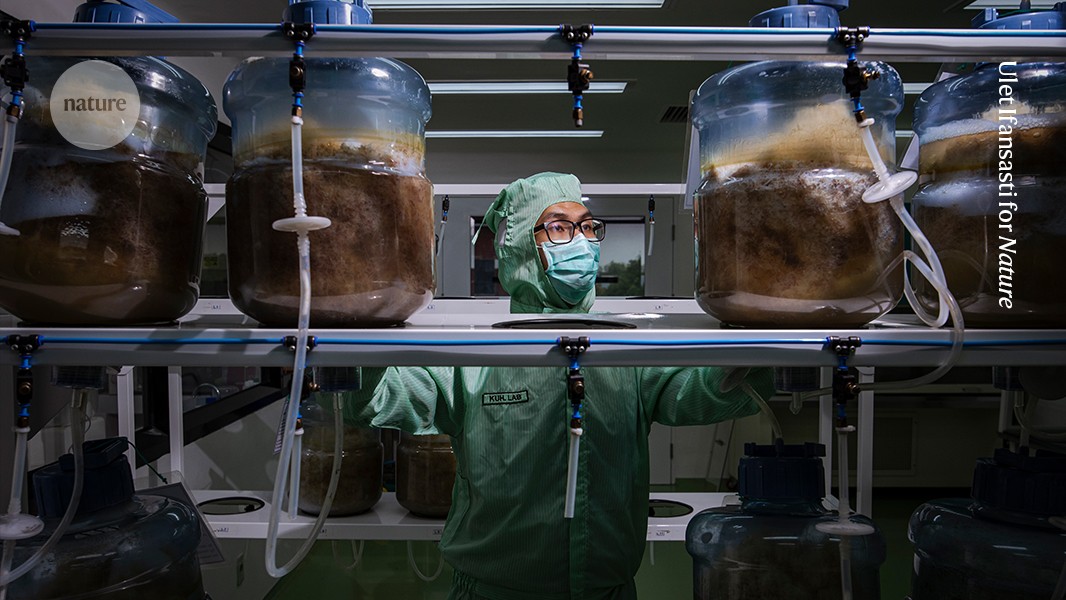Speeding up ginseng growth to aid drug discovery

Plant scientist Johan Sukweenadhi uses ‘hairy-root culture’ to improve ginseng yields at the University of Surabaya in Indonesia
“In this photo, I’m standing in Kalbe Ubaya Hanbang-Bio Laboratory, the first lab in Indonesia devoted to culturing the root of the ginseng plant (Panax ginseng), at the University of Surabaya in East Java. The main challenge is keeping the lab sterile to make sure that the plant material we culture is not contaminated, which is why I’m wearing disposable clean-room overalls.
In Asia, ginseng is valued for its restorative properties. Work in recent years has shown that it contains around 200 bioactive compounds. Some of those are known as ginsenosides, which can interact with ion channels and cell receptors. These ginsenosides show anti-inflammatory, antioxidant, antibacterial, antiviral and antifungal activity in humans. There are even studies showing anti-tumour activity (S. Kim et al. Processes 9, 1344; 2021).
My research, however, focuses less on ginseng’s medical background and more on how to grow a greater amount of it. The plant is not found in Indonesia’s tropical climate — it only grows in the subtropics — and typically takes four to six years to be ready to harvest. We are using plant tissue culture to produce a local source that we can grow in eight weeks. To do this, we use a method known as hairy-root culture, which uses the soil bacterium Rhizobium rhizogenes to infect plant roots, causing them to grow abnormally fast in artificial media without producing stems or leaves. The photo shows cultivation in 18-litre bioreactors that produce 2.5 kilograms of ginseng root, starting from only 150 grams. We are using a similar technology to grow red ginger (Zingiber officinale), one of Indonesia’s native herbal plants.
Enjoying our latest content?
Login or create an account to continue
- Access the most recent journalism from Nature's award-winning team
- Explore the latest features & opinion covering groundbreaking research
or
Sign in or create an account Continue with Google
Continue with Google
Nature 642, 264 (2025)
doi: https://doi.org/10.1038/d41586-025-01693-w
This interview has been edited for length and clarity.
This story originally appeared on: Nature - Author:Rachel Brazil


















